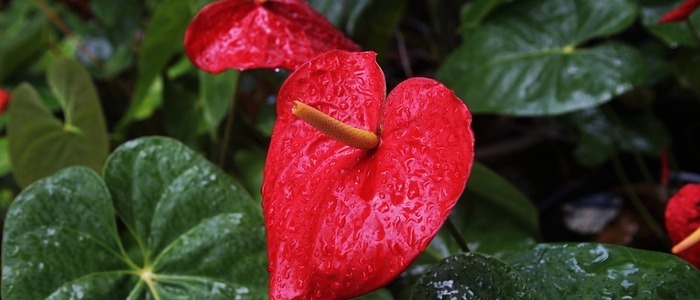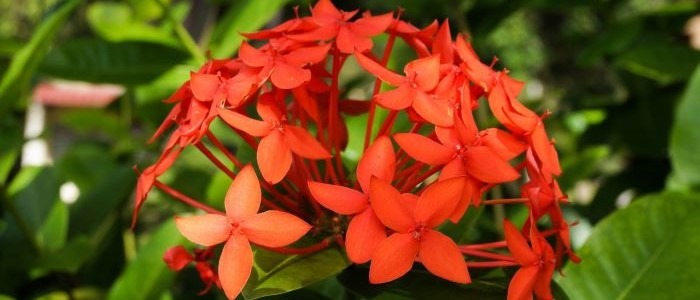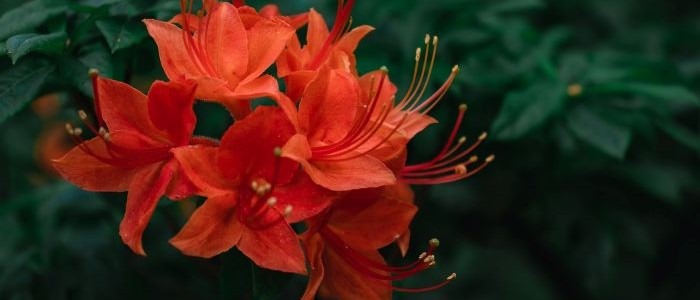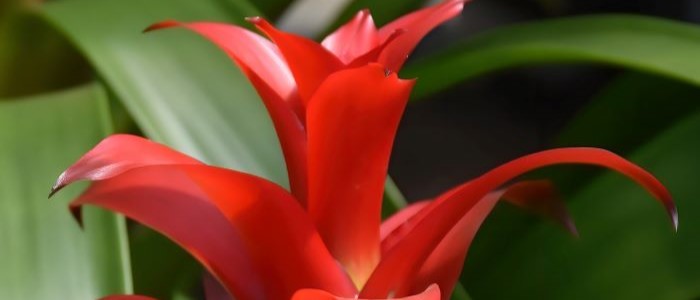Welcome to the wonderful world of Flaming Katy plants! Whether you’re an experienced gardener or just getting started in indoor gardening, this guide can help you add a vibrant splash of color to your home. In this post, we’ll discuss what makes Flaming Katy plants so great, the different varieties available, and tips for choosing the right one for your home. So, grab a cup of tea and let’s get started!
A Flaming Katy plant, sometimes called Christmas kalanchoe or florist kalanchoe, is a type of flowering succulent in the genus Kalanchoe. It has thick leaves that range in color from light green to dark purple. Its flowers come in an array of vibrant colors including red, pink, and yellow with some varieties displaying a mix of multiple colors. Flaming Katy plants are popular houseplants due to their unique appearance and long-lasting blooms. They can bring a bright pop of color to any room in the home, particularly during its flowering season which typically lasts from late fall to early spring.
Flaming Katy Plant Frequently Asked Questions
Is difficult to maintain a flaming Katy?
No, The Flaming Katy plant, also known as Christmas kalanchoe or florist kalanchoe, is an easy-to-care-for low maintenance plant. With proper care, the Flaming Katy can live for many years with little maintenance.
Is it easy to propagate the Flaming Katy Plant?
The Flaming Katy plant can easily be propagated from stem cuttings, making it a great option for those looking to start a new houseplant collection. This process is simple allowing you to share your favorite plant with friends or family!

Taking Care of the Flaming Katy Plant
Kalanchoe is a diverse genus with over 125 species, some of which are used as houseplants. Some of the most common kalanchoe varieties include Christmas kalanchoe (Kalanchoe blossfeldiana), florist kalanchoe (Kalanchoe crenata), and Flaming Katy plant (Kalanch thyrsiflora). Christmas kalanchoe is known for its bright blooms in red, orange, and pink shades, while the florist variety has delicate pale yellow flowers.
Flaming Katy plants are characterized by their vibrant orange-red petals arranged in a star-like pattern. All three varieties are easy to care for and will reward you with beautiful blooms throughout the year.
In addition to these popular varieties, many other lesser-known species of the kalanchoe are available in various colors and sizes. Some have striking foliage, while others feature distinctive shapes or petal patterns. Whether you’re looking for a showy plant for your garden or a unique houseplant to brighten up your home, there’s sure to be a kalanchoe that fits the bill.
Five Reasons to Add Flaming Katy Plants to Your Home
The Flaming Katy plant, also known as Christmas kalanchoe or florist kalanchoe, is an easy-to-care-for houseplant that produces beautiful red and orange blooms. Its bright colors and star-shaped petals make it a cheerful addition to any home. Here are some reasons why you should consider adding the Flaming Katy to your home:
• Low-Maintenance Care – With proper care, the Flaming Katy can live for many years with little maintenance. It only needs bright, indirect sunlight and occasional watering to stay healthy. You also don’t need to worry about pruning as it is a slow-growing plant that rarely needs trimming.
• Ease of Propagation – The Flaming Katy can easily be propagated from stem cuttings, making it a great option for those looking to start a new houseplant collection. The process is simple and requires minimal effort, allowing you to share your plant with friends or family!
• Attractive Blooms – The Flaming Katy is an eye-catching plant with bright red and yellow flowers appearing in late winter and early spring. This makes it the perfect addition to a home during the holiday season when you want to add some festive cheer!
• Easy to Find – Flaming Katys are widely available at garden centers and nurseries, as well as through florists and online vendors. This makes it easy to find the perfect one for your home.
• Versatile Look– The Flaming Katy can provide a lush look when placed on tabletops or shelves or even hung up as a hanging basket. It’s also easy to pair with other types of plants, such as Christmas Kalanchoe and Florist Kalanchoe, to add more color and texture.
Tips for Choosing the Right Flaming Katy Variety for Your Home
• Look for Healthy Plants – When shopping for a Flaming Katy, look for plants that have healthy leaves and roots. Avoid any with wilted or discolored foliage.
• Check Bloom Color – The flowers of the Flaming Katy come in shades of red, yellow, and orange. Choose one to match your home’s décor.
• Consider Size – Flaming Kates come in a variety of sizes, so you can easily find one that’s right for your living space. Smaller varieties are ideal for windowsills or tabletops, while larger ones make a bold statement.
Care and Maintenance of Your Flaming Katy Plants
Here are a few tips to guide you in the care and maintenance of your Flaming Katy plants
• Watering Needs – The Flaming Katy should be watered only when the soil is dry. Too much water can cause root rot, so it’s important to not overdo it.
• Provide Adequate Light – The Flaming Katy needs plenty of indirect sunlight in order to thrive. Its leaves may burn if placed in an area with too much direct sunlight.
• Consider Temperature – This plant is more tolerant of cooler temperatures than other houseplants and can tolerate temperature fluctuations. It’s best to keep it away from drafts.
• Fertilize Occasionally – A balanced fertilizer should be used every two or three months during the warmer seasons, but reduced in winter.
In conclusion, the Flaming Katy (or Christmas Kalanchoe or Florist Kalanchoe) is an excellent choice for any home. With its beautiful foliage and minimal care requirements, this plant will be a bright addition to any room while demanding very little in return. Just remember to provide adequate light, consider temperature needs, and fertilize This should be done after the flowering period is over, especially around late summer.
Other House Plants With Red Flowers













